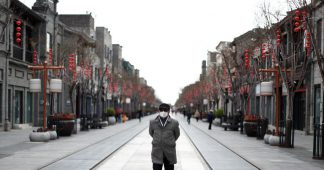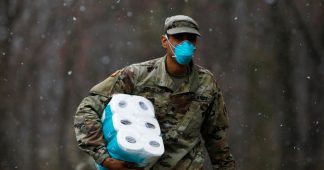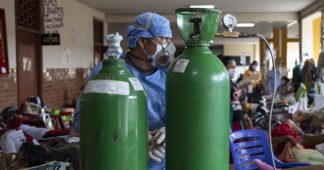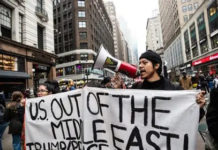By Jerry Zhang
Nov. 11, 2021
Beginning in mid-October, following the resurgence of the global pandemic, there have been more widespread outbreaks in China. Most provinces have been affected, and the situation is still not fully contained.
As of November 5, outbreaks had spread to more than 20 provinces. In addition, due to seasonal factors, particularly the onset of colder weather, pandemic prevention and control has become more difficult and complicated, among the country’s nearly 1.5 billion people.
According to the National Health Commission, as of midnight on November 8, there were 393 imported confirmed cases and 1,222 local cases, including 27 severe ones. On that day, 62 new confirmed cases and 74 new asymptomatic infections were added.
The current wave of infections was caused by a number of unrelated overseas sources. As of November 10, there were 88 medium and high-risk areas. The seven high-risk areas were in Heilongjiang Province (three regions), Hebei Province (two regions), Beijing (one region) and Inner Mongolia (one region). The 81 medium-risk regions were in 14 provincial-level administrative regions, including Beijing, Liaoning and Sichuan.
Reports indicate multiple transmission chains, with most of the cross-regional infections related to domestic travel. Potentially at-risk personnel have greater mobility across regions, increasing the risk of further spread of the pandemic.
At the same time, transmission chains have emerged in multiple port cities, some related to elderly tour groups. The proportion of elderly patients suffering severe illnesses is relatively high.
There have been cases of infection of medical workers and other front-line workers in many places, including nurses, doctors, medical students and workers in centralised quarantine facilities. According to information released on November 3, in Xining City, Qinghai Province, the six new confirmed cases from November 1 to 2 were all medical workers. Ningxia, Guizhou and other provinces have also reported infections of workers in quarantine facilities.
In addition, elementary and middle school students have become victims. Zhengzhou City, Henan Province, reported 12 confirmed cases on November 7, of which nine were primary and middle school students, and seven were from the same primary school. The previously reported confirmed cases in Xinji City, Hebei Province also included many primary and middle school students.
At present, the number of new cases in a single day in Heilongjiang Province is gradually decreasing. Hubei, Hunan, Shaanxi and other provinces have not seen any new cases for 12 consecutive days. Community transmission in Inner Mongolia, Beijing, Shandong and other regions has been basically controlled. There are still fluctuating epidemics in Gansu, Qinghai, Yunnan and other places, but the risk of external spread is said to be relatively low.
On November 6, National Health Commission spokesperson Mi Feng told a press conference that since mid-October, the number of new confirmed cases worldwide had rebounded for four consecutive weeks, and China’s actions to prevent infections from overseas had continued to increase.
“It is necessary to adhere to the general strategy of preventing the importation of overseas cases, and the rebound of the domestic pandemic, strict port management and monitoring, and improvement of personal protection of risk groups,” he said.
Generally speaking, the government is adhering to its strict lockdown, mass detection program and pandemic prevention and control strategy, and has become more proficient in implementing it. The government has punished or warned local bureaucrats over “laxity in prevention and control of the pandemic,” but the large-scale pandemic prevention mobilisation has kept the outbreak under control in most areas, at least at this stage.
Wang Huaqing, an expert from the Chinese Center for Disease Control and Prevention, has suggested that for people who completed vaccination more than six months ago, the third dose of vaccination should be provided as soon as possible.
Previously, Wu Liangyou, deputy director of the CDC of the National Health Commission, also said vaccination was still the most critical factor. In the next stage, increasing the rate of triple-dose injections nationwide would be a central policy.
At present, triple-dose injections are mainly provided to people at high risk of infection and personnel in key positions. According to reports, more than 20 provinces have carried out this work.
Despite the Western media launching a new round of campaigns to promote the alleged problems of China’s pandemic prevention policy, and to demand the country’s “opening up,” major Chinese scientists are supporting the government’s policy.
On November 1, Zhong Nanshan, a well-respected medical scientist and an academician of the Chinese Academy of Engineering, gave an interview rejecting the view that the “zero-COVID policy is too costly.” He said China’s continuous “zero-infection, zero spread” policy seemed to require a lot of investment, but compared with the killing policies of some countries, the actual cost was lower.
Epidemiologist Jiang Qingwu also said the zero-COVID policy was to use affordable low costs to ensure the health of the people and low mortality.
An important reason for Beijing’s adherence to zero-COVID is the general support of scientists and the public. Although the Stalinist bureaucracy is very bureaucratic when implementing policies, and this has generated complaints on social media, the regime is also under working-class pressure to retain the policy to protect public health.
Recent comments on Weibo provided some insight into this sentiment. One noted: “Some time ago, both Europe and the United States had to open up. The Western media all devalued and questioned China’s zero-COVID policy. This time the epidemic in Europe has become the epicenter, and experts predict that this will be 50 percent of the epidemic. Ten thousand people have died, and there are voices in the West that agree with China’s policies, and they are beginning to recognise that this is the lowest cost measure.”
Another said: “Given the population density of China, if zero-COVID is not carried out, it will become like the original situation in Wuhan. At that time, it was just a city in Wuhan. If all of China became like that, not only would it not be able to guarantee the economy and production, but also a large number of lives would have to be sacrificed.”
Another commented: “The public has reached a consensus on zero-COVID, and no one will be dissatisfied with this epidemic prevention goal. However, when implementing policies in different regions, the situation is complicated. But since epidemic prevention and control is for the people, we hope to give full play to the power of the masses. Then people should be allowed to express their opinions.”
Excerpt of an article published by wsws.org
We remind our readers that publication of articles on our site does not mean that we agree with what is written. Our policy is to publish anything which we consider of interest, so as to assist our readers in forming their opinions. Sometimes we even publish articles with which we totally disagree, since we believe it is important for our readers to be informed on as wide a spectrum of views as possible.











